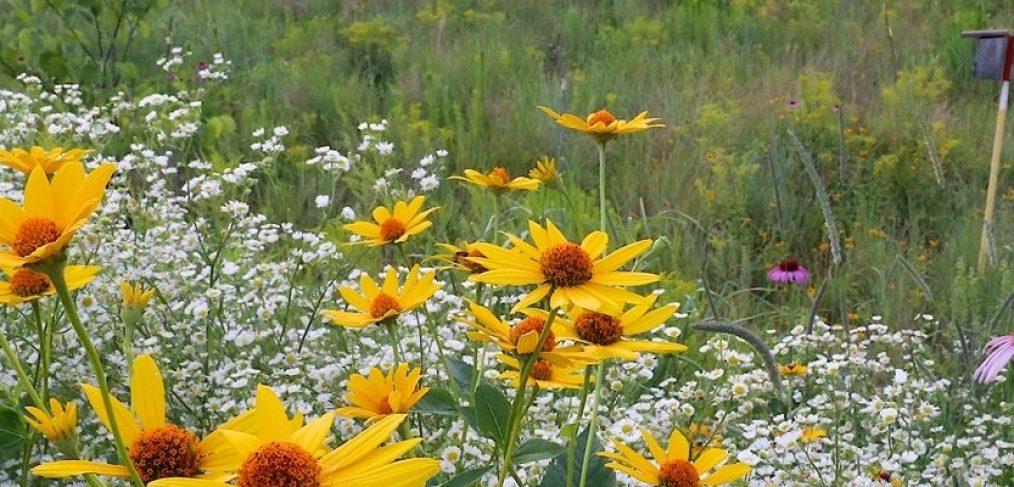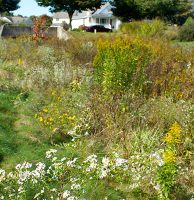
Making Your Landscape More Drought Tolerant
Central Pennsylvania and much of the state has experienced a wet summer so far, with major storms and flooding in parts of the commonwealth. By this time of the summer in many years past, parts of the state were under drought watches or warnings. So while we are in good shape right now in terms of green grass and landscape plantings, knowing what to do under drought conditions is still something every homeowner and landscape manager should know.
Drought Watches and Warnings
Drought is when conditions are drier than normal, due to less rain or snowmelt than is typical, over a period of weeks to months to even years, depleting water supplies. According to the US Geological Survey (USGS), a drought watch is put in place when it appears that a drought is forthcoming. Government officials will request voluntary water conservation measures to reduce water use by at least five percent in the affected area. A drought warning is more stringent, requiring 10-15 percent water use reduction, or greater, for the affected area. A drought emergency is declared to “avoid depletion of water sources, to assure at least minimum water supplies to protect public health and safety, to support essential and high priority water uses, and to avoid unnecessary economic impacts. During this phase, mandatory restrictions are imposed on nonessential water uses.” The reduction is set at 15 percent or more, and public water suppliers are authorized to institute water rationing, if mandatory restrictions prove insufficient to protect supplies.
Landscaping to Minimize Water Use
The average Pennsylvania yard is composed primarily of grass with some trees, shrubs, and flowers added for some color and shade. These can be water-hungry landscapes that may suffer during a drought. There are alternative landscape plants and designs that can help reduce your water bill and still have an attractive yard.
- Drought and heat tolerant plants that are suitable for Pennsylvania, according to Penn State Extension*, include:
- Trees like white fir (Abies concolor), hedge maple (Acer campestre), Kentucky coffeetree (Gymnocladus dioicus), ginkgo (Ginkgo biloba), American sweetgum (Liquidambar styraciflua), and sassafras (Sassafras albidum)
- Shrubs like New Jersey tea (Ceanothus americanus), gray dogwood (Cornus racemosa), St. Johnswort (Hypericum ), juniper (Juniperus spp.), bayberry (Myrica pensylvanica), ninebark (Physocarpus opulifolius), and nannyberry (Viburnum lentago)
- And perennials like butterfly weed (Asclepias tuberosa), false Indigo (Baptisia australis), tickseed (Coreopsis verticillata), red-hot poker (Kniphofia uvaria), gayfeather (Liatris spicata), bearded tongue (Penstemon), moss phlox (Phlox subulata), obedient plant (Physostegia virginiana), and black-eyed Susan (Rudbeckia spp.)
*some of the plants listed on the site are considered invasive by the PA Department of Conservation and Natural Resources. Before choosing a plant at a nursery or online, be sure it is not invasive, and consider plants native to PA, when possible.
- Place plants with similar water requirements near each other. That way you can target where irrigation needs to take place, rather than haphazardly across the entire space.
- Be sure to place sun loving plants in bright spots and shade loving plants away from the sun, otherwise you may have to give extra irrigation to the shade loving plants in order to keep them alive.
Water Conservation Measures for Landscapes
If you’re not ready for a complete landscape makeover there are still some simple steps you can take to make your yard more drought-tolerant.
- Use an irrigation system that is more water use friendly, such as a soaker hose or drip irrigation system, rather than sprinklers. These will help target where the water goes and reduce the amount of water that evaporates. If you do need to use a sprinkler system, make sure it has a timer that will automatically shut off and not turn on after a rain event.
- Water in evening or very early in the morning, rather than during the day, to reduce evaporation and burn out of the plants.
- Put mulch around your plants, which will help retain moisture and keep away more weeds. However, be sure to install the mulch properly (i.e. not up against the bark of a tree, in a “mulch volcano” structure, etc.). Tips on mulching from Penn State Extension can be found here.
- Collect rain from your roof by connecting your downspout to one or more rain barrels and use the water for irrigating your landscape. If you have a very large roof, like at a warehouse or college building, consider an underground cistern for large scale water storage and reuse.
When All Else Fails
These tips and techniques should help make your landscape a bit more drought tolerant, but a prolonged drought can test even the best Pennsylvania yard. If you are under severe drought water use restrictions that limit outdoor water use, it’s best to let the lawn die in favor of watering and preserving trees and shrubs that will be more costly to replace. Planning ahead now for the worst case scenario, by replacing some lawn with drought tolerant plants, rock mulch, and other low-maintenance features, will help lower your outdoor water bill and reduce some worry in the future.


